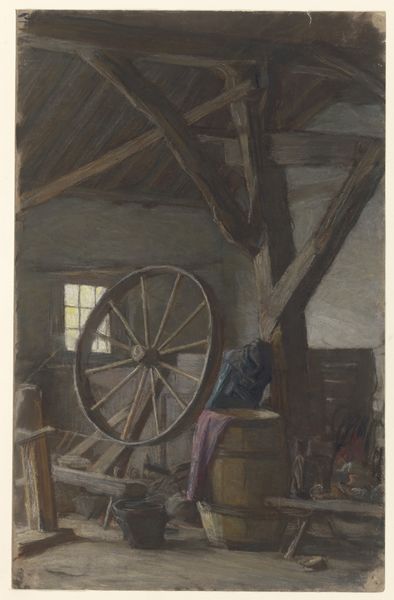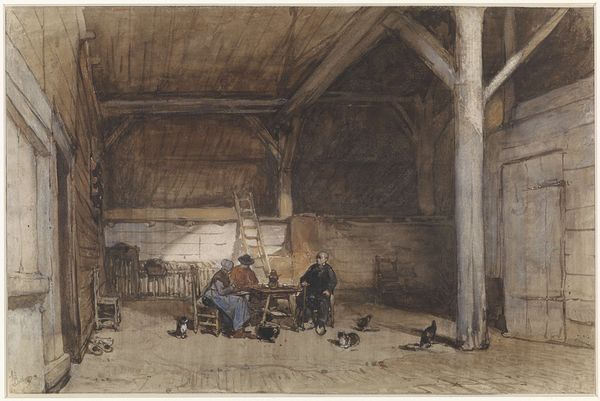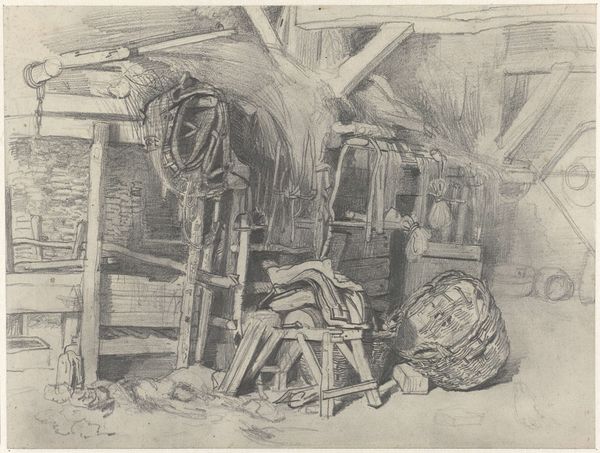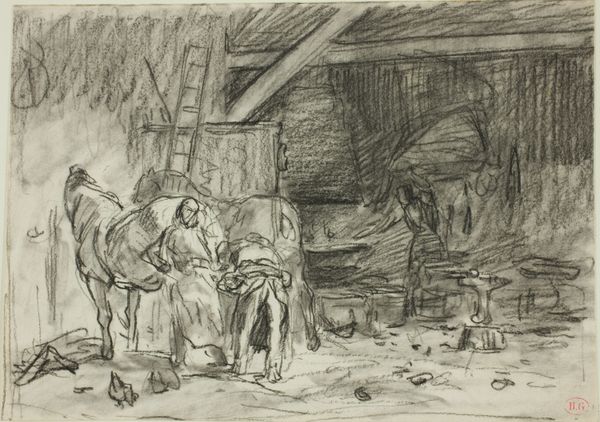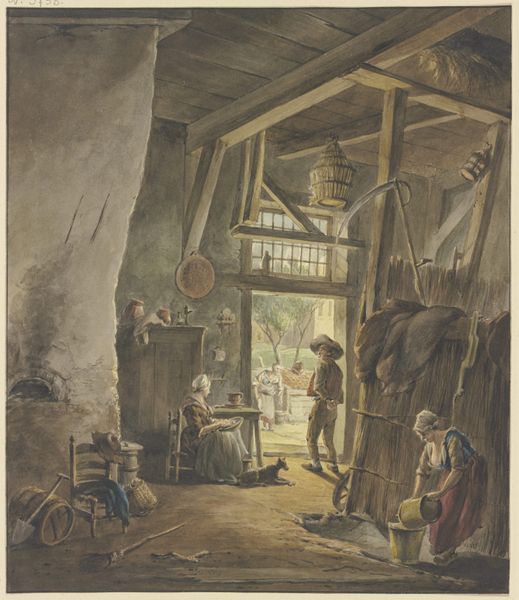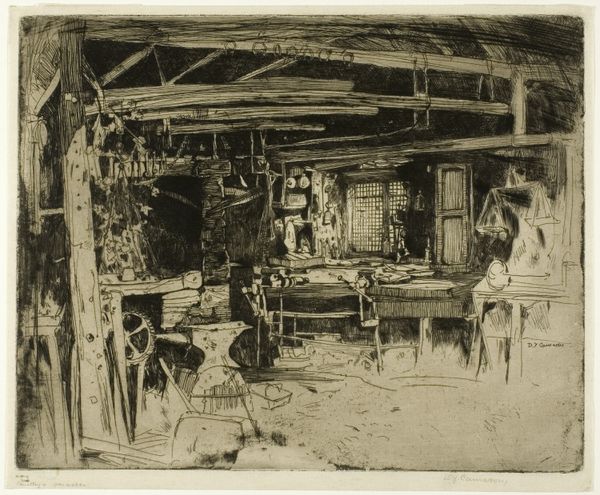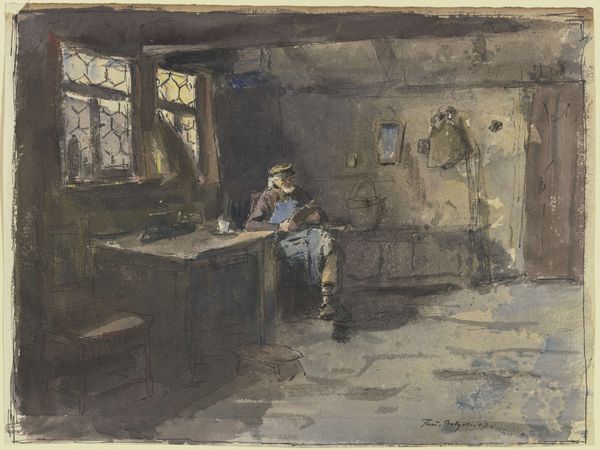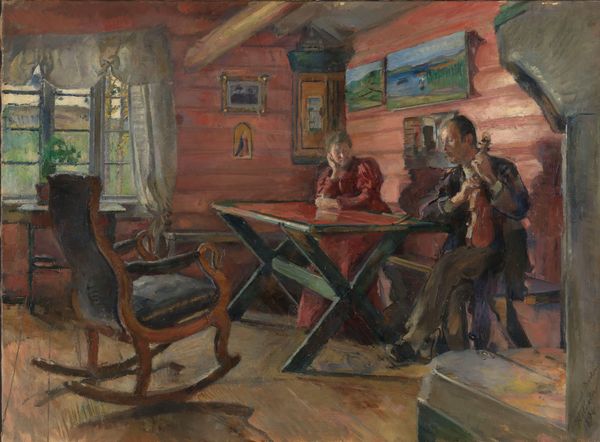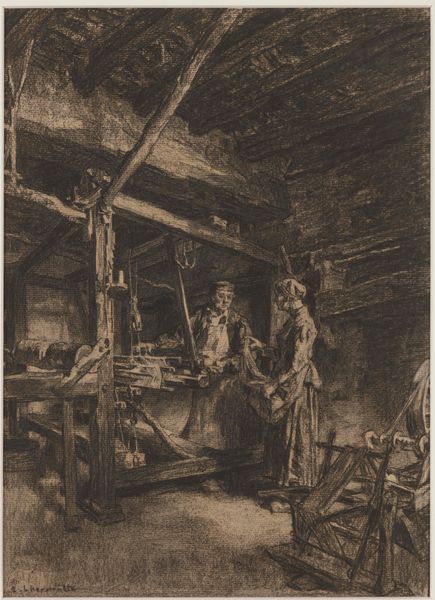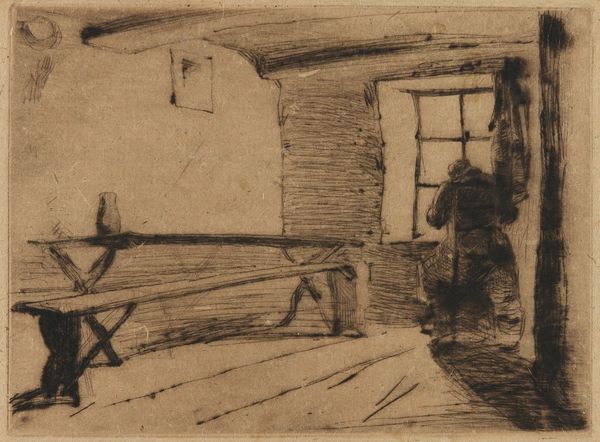
Dimensions: sheet: 38.3 × 48.5 cm (15 1/16 × 19 1/8 in.) (approximate dimensions, measured in housing
Copyright: National Gallery of Art: CC0 1.0
Curator: This is "The Weaver's Cottage," a pastel and charcoal drawing dating from around 1903 by Léon Lhermitte. Editor: It has a very subdued palette, mostly greys and browns. And yet, somehow it feels warm, perhaps even nostalgic. The hazy light coming through the windows really softens the scene. Curator: Absolutely. Lhermitte often focused on rural life in France, capturing the dignity and labor of working-class people. Here, we see two figures engaged in the traditional craft of weaving. It's a glimpse into a world rapidly changing with industrialization. Editor: The composition is fascinating. The loom itself dominates the foreground, creating a sort of grid that the eye must penetrate to reach the figures. It's almost like a barrier. Curator: Indeed. Consider that in France, this artistic creation emerged during the Belle Epoque, an era defined by social change, the upswing of cities, the development of manufacturing, and vast cultural growth—juxtapose this moment in time with this traditional craft, and one is struck with how meaningful Lhermitte's focus on preserving a soon-to-be bygone life was for the artist. The looming machine that occupies the picture seems to be the story's protagonist here. Editor: I’m drawn to the interplay of light and shadow, the subtle gradations he achieves with the charcoal and pastel. You can almost feel the textures of the wood, the wool, the roughspun fabric. There’s a real tactility. I suppose you might argue that is evidence of a deep sense of respect for these artisans and what they produced. Curator: Exactly. These works had value to the culture that housed them. Lhermitte used his art as a vehicle to acknowledge, respect, and almost eulogize these traditional practices. Editor: It is evocative how Lhermitte takes the industrial revolution, a period known to erase tradition and manual creation, to, as you suggest, elevate it. This gives me much to consider. Curator: The artist creates what is lost. In its essence, that is what Lhermitte accomplished here.
Comments
No comments
Be the first to comment and join the conversation on the ultimate creative platform.
